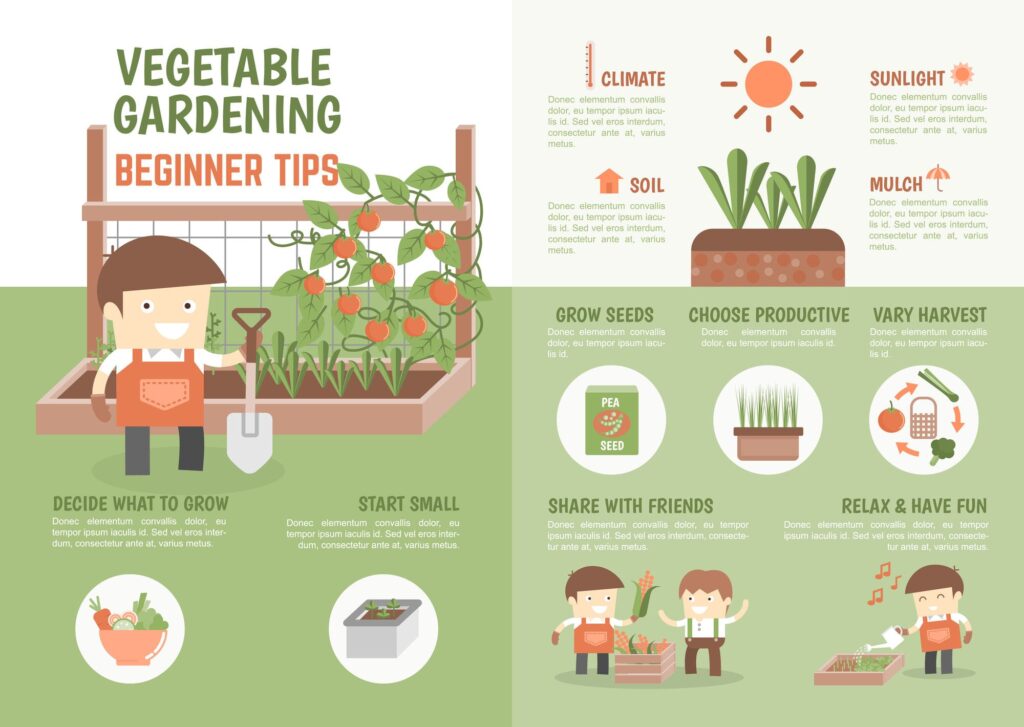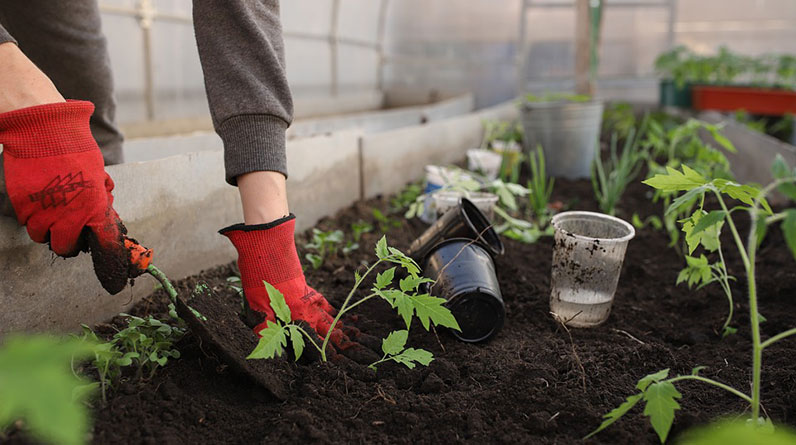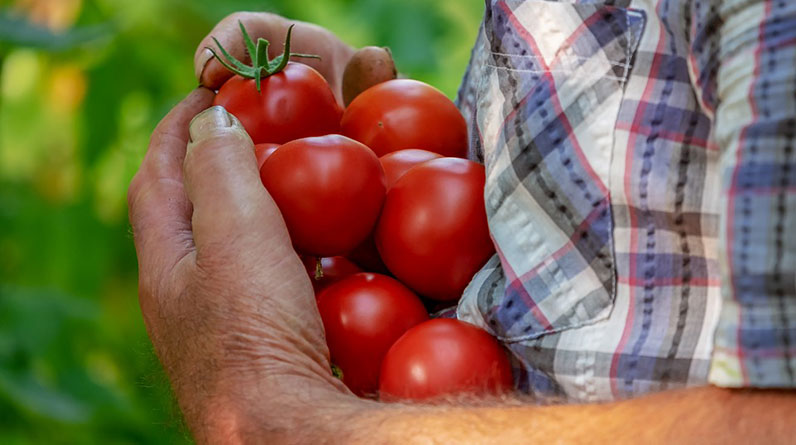The Beginner’s Guide to Organic Gardening
Guide to Organic Gardening
Organic gardening has become much more popular since Covid. The aspect of health has been catapulted into all our minds. Remote working suddenly became the norm, and people had more time to grow their own fruits and vegetables. A Beginner’s Guide to Organic Gardening may look daunting, but healthy natural soil will overcome most problems.
Apart from being healthier, it is also cheaper to grow your own food than to purchase organic food. You know the feel of your own soil, and all the food has been grown with love. Growing your own food is a great family activity that you can do with the kids. You have the satisfaction that you are giving yourself/ and or your family the best nutrient dense food possible.
Sustainability is important
Your fruits, vegetables, and plants use companion planting to nurture your soil naturally and sustainably. No synthetic chemicals or fertilizers will be used, and no genetically modified seeds will be used. Using genetically modified seeds on farms has led to what has been termed super pests. These are very resistant to being exterminated or discouraged. Another reason not to use genetically modified seeds is that they have been irradiated, and you will not be able to use them next year for a new crop.
Natural heirloom seeds have evolved over hundreds of years. Every year farmers take the best of the crop to use the seeds for the following year. Genetic diversity has been reduced in modified seeds. This genetic diversity aids ecosystems in adapting to changing environments. It does this by helping each individual species in your garden adjust to new pests and diseases.
Herbicides, including glyphosate, alter the plants’ ability to absorb nutrients. Worse than that, glyphosate contaminates the soil by killing essential microbes that are in the soil to keep it healthy. Biotech and chemical companies have encouraged this chemical-dependent strategy to increase their profits. It means selling more increasingly toxic pesticides to combat the super resistant pests. This is a no win situation for your family.
Organic gardening has many benefits, including protecting the environment and reducing reliance on chemicals. It also helps to protect the water table. Using genetically modified crops uses much more water than growing heirloom seeds. Another massive benefit is that the food tastes more natural and also it is fresher. It literally goes from garden to plate in hours rather than days.

It can seem daunting if you’re new to organic gardening, but this Beginner’s Guide to Organic Gardening outlines all the basics. With some knowledge and strategic planning, anyone can start growing their own organic food very quickly.
Choosing the Optimal Space to Garden
The first step in starting an organic garden is to choose the right location. You’ll want to select a spot with plenty of sunlight (at least 6 hours per day) and good drainage. Avoid low-lying areas that are prone to flooding and areas with heavy shade.
Additionally, consider the location’s proximity to a water source, as watering plants in an organic garden can be time-consuming. If possible, choose a location near a hose or water spigot to make watering easier. You should also consider the availability of compost or organic matter for enriching the soil. If these resources are not readily available in your chosen location, you may need to transport them to your garden. Do you want to have your organic gardening in a back garden that doesn’t have access to the street? It is a pain to lug compost through the house.
Test Your Soil
Before you start planting, it’s important to test your soil to see what nutrients it has and what it may be lacking. You can purchase a soil testing kit at a gardening store or send a soil sample to a testing lab. This will help you determine what amendments you need to add to the soil to make it a suitable environment for growing food.
Once you have the soil test results, you can add any necessary amendments to the soil. This might include adding compost or other organic matter to improve the soil structure or adding fertilizers to boost the levels of specific nutrients. Make sure to follow the recommendations of the soil test and the instructions on any fertilizers or amendments you use. It’s also a good idea to check the pH level of your soil, as different plants have different pH requirements. Adjusting the pH of your soil, if necessary, can help ensure that your plants can absorb the nutrients they need to thrive.
Prepare the Soil
Once you know what your soil needs, it’s time to start preparing it for planting. If your soil is compacted or heavily clay-based, you may need to loosen it up with a garden fork or tiller. You can also add organic matter, such as compost or well-rotted manure, to improve the soil structure and add nutrients.
In addition to loosening and enriching the soil, it’s also a good idea to remove any weeds or debris that may be present. Weeds can compete with your plants for resources, and debris can harbor pests or diseases. If you have a particularly bad weed problem, you may want to consider using a weed barrier cloth to help prevent new weeds from sprouting up. Ensure to carefully remove any weeds by the roots to prevent them from regrowing.
Choose the Right Plants
To maximize yields, choose varieties that will thrive in your climate. It is a struggle to grow Middle Eastern or Mediterranean crops such as aubergine in more temperate climates. They may grow, but they won’t thrive. Research the specific growing requirements for each plant, including the amount of sunlight, water, and space it needs. Companion planting is a useful trick. Certain plants, when grown next to each other, help both to survive. Examples are basil and tomatoes.
Start Planting
Once your soil is prepared, and you’ve chosen the right plants, it’s time to start planting. Follow the specific planting instructions for each plant, including the proper spacing and depth. If you’re starting plants from seeds, you can start them indoors in seedlings trays or pots and then transplant them outside once they are large enough.
When planting seedlings or transplants, be sure to water them thoroughly and provide them with adequate sunlight. If you’re planting seeds directly in the ground, make sure to keep the soil moist until the seeds germinate.
Some plants, such as tomatoes and peppers, benefit from planting in small hills to help improve drainage. As your plants grow, be sure to monitor them for pests or diseases and address any issues as needed.
Water and Fertilize
Proper watering and fertilization are key to the success of your organic garden. Water your plants deeply and consistently, making sure not to overwater or underwater them. Use a drip irrigation system or a soaker hose to deliver water directly to the roots of your plants rather than watering from above, which can lead to fungal diseases.
When it comes to fertilization, use organic fertilizers such as compost, bone meal, and fish emulsion. Avoid synthetic chemical fertilizers, which can harm beneficial soil organisms and pollute waterways.
Control Pests and Diseases
One of the challenges of organic gardening is controlling pests and diseases without using synthetic chemicals. You can use many natural methods, such as introducing beneficial insects, using organic pesticides, and practicing crop rotation. Keep an eye on your plants and be proactive in addressing any issues as soon as they arise. When your garden is organic, you have to accept the yield is less than the yield of a garden treated with chemicals. Most people accept this happily because they are not ingesting chemicals into your system. Pests will inevitably eat some of your crops. Blight and disease will also impact more of a crop than veggies grown with pesticides.
An effective method for controlling pests and diseases is to keep your garden clean and well-maintained. Remove any infected or damaged plant parts and destroy them, as they can harbor pests or diseases. Sanitize your gardening tools regularly to prevent the spread of infections. And be sure to water your plants at the base, rather than using overhead irrigation, as this can help to prevent the spread of fungal diseases. By following these practices and using natural methods, you can effectively control pests and diseases in your organic garden.
Harvest and Preserve
As your plants start to produce fruit and vegetables, it’s time to start harvesting. Choose ripe produce and use it fresh, or preserve it by freezing, canning, or drying. You can also consider sharing your excess produce with friends, family, or a local food bank.
When harvesting your produce, be sure to use clean, sharp tools to avoid damaging the plants. If you are preserving your produce, follow proper canning or freezing techniques to ensure the food is safe. You also need to know the date you preserved your food. A clear label with the date helps you not to get confused. By preserving your excess produce, you can enjoy the fruits of your labor all year round. Enjoy your homegrown, organic produce!
Conclusion to Beginner’s Guide to Organic Gardening
Don’t be intimated by the length of Beginner’s Guide to Organic Gardening. It is just an outline we have linked to more detailed links to specific problems, such as testing the soil and soil structure. Your garden has its own unique ecosystem, and it will teach you everything you need to know.

